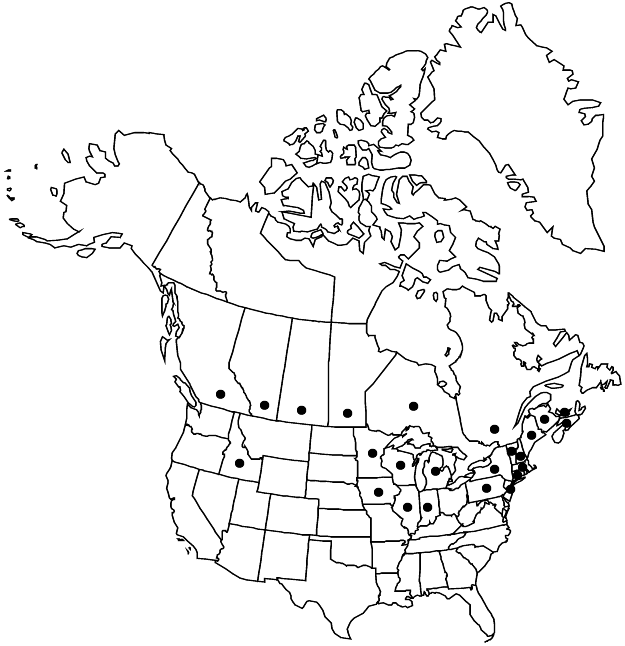Difference between revisions of "Silene chalcedonica"
in J. Sturm et al., Deutsch. Fl. ed. 2, 5: 96. 1901.
FNA>Volume Importer |
imported>Volume Importer |
||
| Line 1: | Line 1: | ||
{{Treatment/ID | {{Treatment/ID | ||
|accepted_name=Silene chalcedonica | |accepted_name=Silene chalcedonica | ||
| − | |accepted_authority=(Linnaeus) E. H. L. Krause | + | |accepted_authority=(Linnaeus) E. H. L. Krause |
|publications={{Treatment/Publication | |publications={{Treatment/Publication | ||
|title=in J. Sturm et al., Deutsch. Fl. ed. | |title=in J. Sturm et al., Deutsch. Fl. ed. | ||
| Line 8: | Line 8: | ||
}} | }} | ||
|common_names=Maltese-cross;scarlet lychnis;lychnide de Chalcédoine;croix de Jérusalem | |common_names=Maltese-cross;scarlet lychnis;lychnide de Chalcédoine;croix de Jérusalem | ||
| + | |special_status={{Treatment/ID/Special_status | ||
| + | |code=I | ||
| + | |label=Introduced | ||
| + | }} | ||
|basionyms={{Treatment/ID/Basionym | |basionyms={{Treatment/ID/Basionym | ||
|name=Lychnis chalcedonica | |name=Lychnis chalcedonica | ||
| Line 34: | Line 38: | ||
|elevation=0-300 m | |elevation=0-300 m | ||
|distribution=Alta.;B.C.;Man.;N.B.;N.S.;Ont.;P.E.I.;Que.;Sask.;Conn.;Idaho;Ill.;Ind.;Iowa;Maine;Mass.;Mich.;Minn.;N.H.;N.J.;N.Y.;Pa.;Vt.;Wis.;Europe. | |distribution=Alta.;B.C.;Man.;N.B.;N.S.;Ont.;P.E.I.;Que.;Sask.;Conn.;Idaho;Ill.;Ind.;Iowa;Maine;Mass.;Mich.;Minn.;N.H.;N.J.;N.Y.;Pa.;Vt.;Wis.;Europe. | ||
| + | |introduced=true | ||
|discussion=<p><i>Silene chalcedonica</i> is widely cultivated but rarely escapes and probably does not persist.</p> | |discussion=<p><i>Silene chalcedonica</i> is widely cultivated but rarely escapes and probably does not persist.</p> | ||
|tables= | |tables= | ||
| Line 43: | Line 48: | ||
-->{{#Taxon: | -->{{#Taxon: | ||
name=Silene chalcedonica | name=Silene chalcedonica | ||
| − | |authority=(Linnaeus) E. H. L. Krause | + | |authority=(Linnaeus) E. H. L. Krause |
|rank=species | |rank=species | ||
|parent rank=genus | |parent rank=genus | ||
| Line 57: | Line 62: | ||
|publication title=in J. Sturm et al., Deutsch. Fl. ed. | |publication title=in J. Sturm et al., Deutsch. Fl. ed. | ||
|publication year=1901 | |publication year=1901 | ||
| − | |special status= | + | |special status=Introduced |
| − | |source xml=https:// | + | |source xml=https://bitbucket.org/aafc-mbb/fna-data-curation/src/2e0870ddd59836b60bcf96646a41e87ea5a5943a/coarse_grained_fna_xml/V5/V5_355.xml |
|subfamily=Caryophyllaceae subfam. Caryophylloideae | |subfamily=Caryophyllaceae subfam. Caryophylloideae | ||
|genus=Silene | |genus=Silene | ||
Latest revision as of 22:10, 5 November 2020
Plants perennial, coarse, rhizomatous; rhizome branched, stout. Stems erect, few-branched, 50–100 cm, hispid. Leaves rounded into tightly sessile base; blade lanceolate to ovate, 5–12 cm × 20–60 mm, apex acute, sparsely scabrous-pubescent on both surfaces, scabrous-ciliate on abaxial margins and midrib; basal leaf blades broadly spatulate. Inflorescences subcapitate between terminal pair of leaves, 10–50-flowered, congested, bracteate; bracts lanceolate, herbaceous, ciliate. Flowers sessile to subsessile, 10–16 mm diam.; calyx 10-veined, narrow and tubular in flower, clavate in fruit, 12–17 mm, margins dentate, lobes triangular-lanceolate, 2.5–2.5 mm, coarsely hirsute; petals scarlet, sometimes white or pink, clawed, claw equaling calyx, limb spreading, obovate, deeply 2-lobed, 6–11 mm, shorter than calyx, appendages tubular, 2–3 mm; stamens equaling calyx; stigmas 5, equaling calyx. Capsules ovoid, 8–10 mm, opening by 5 teeth; carpophore 4–6 mm. Seeds dark reddish brown, reniform-rotund, 0.7–1 mm diam., coarsely papillate; papillae ca. as high as wide. 2n = 24 (Europe).
Phenology: Flowering summer.
Habitat: Roadsides, waste places, open woodlands
Elevation: 0-300 m
Distribution

Introduced; Alta., B.C., Man., N.B., N.S., Ont., P.E.I., Que., Sask., Conn., Idaho, Ill., Ind., Iowa, Maine, Mass., Mich., Minn., N.H., N.J., N.Y., Pa., Vt., Wis., Europe.
Discussion
Silene chalcedonica is widely cultivated but rarely escapes and probably does not persist.
Selected References
None.